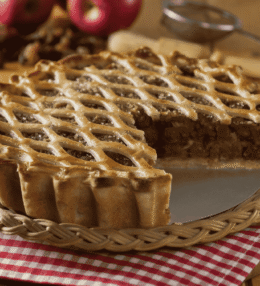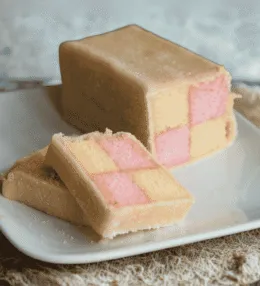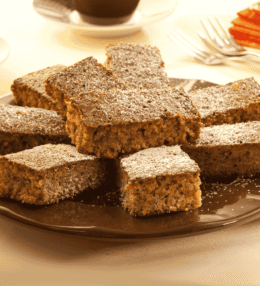
- View
Table of Contents
TogglePeka is a dish that reflects the heart of Croatian communal dining. It is not just food but an experience, cooked slowly under a heavy iron or clay dome covered in embers. The process creates something that feels timeless, connecting tradition and flavour in a single meal.
Families and friends often gather around while Peka cooks, as the air fills with aromas of roasted meat, vegetables, and herbs. It is a dish that asks for patience and rewards it with warmth, tenderness, and a sense of shared occasion.
What makes Peka stand out is not only its taste but the way it is prepared. The slow roasting method draws out depth from each ingredient, turning simple produce into a dish that feels both rustic and refined.
Want to dive deeper into Croatian Cuisine? Don’t miss our post on Traditional Croatian Foods to Try
What Is Peka?
Peka is essentially a method of cooking where meat, potatoes, and vegetables are placed in a wide, shallow pan that is covered with a dome shaped lid. The lid is buried under hot embers, creating an oven effect that cooks food gently.
The dish can be made with lamb, veal, octopus, or chicken, depending on what is available. Potatoes and vegetables are added, often with olive oil, garlic, and herbs. Everything is cooked together, allowing the flavours to mingle naturally.
The result is tender meat and vegetables infused with smokiness and aromatic depth. The slow, enclosed cooking keeps moisture inside while giving a subtle roasted finish. Peka is always served hot, usually straight from the pan to the table.
Ingredients and Taste
The ingredients are simple yet carefully chosen. Meat or seafood provides the centrepiece, supported by potatoes, carrots, onions, and peppers. Olive oil is poured generously, ensuring richness and a golden sheen once roasted.
Garlic, rosemary, and bay leaves are the herbs most often used, giving fragrance and balance to the heaviness of the meat. A splash of white wine is sometimes added, lifting the dish with acidity and sharpening the flavours.
The taste is earthy and aromatic, with meat that falls apart easily and vegetables that soak up juices until they are soft and savoury. Each bite carries a mix of smokiness, herbaceous notes, and the natural sweetness of slow cooked produce.
A Taste of History
Peka has been part of Croatian culinary tradition for centuries, especially in Dalmatia and the coastal hinterland. The cooking method reflects a way of life where meals were prepared slowly, often outdoors, while families gathered.
It is thought to have developed from ancient techniques of baking under an iron bell, which made use of fire embers to create an even and lasting heat. This method suited both rural households and those living near the sea.
Over time, Peka became closely associated with celebrations and Sundays, when families had more time to cook together. Preparing it was never rushed, and the wait itself became part of the ritual, with conversation filling the hours.
Today, Peka is offered in traditional taverns known as konobas, often by request since it takes time to prepare. It remains a symbol of Croatian hospitality, a dish that connects history, landscape, and the enduring value of shared meals.
How to Make Peka (Under the Bell Roast)
Peka is a rustic Croatian dish where meat, vegetables, and herbs are slow roasted under a heavy iron dome, traditionally buried in embers. The result is tender meat with deep, smoky flavour and perfectly caramelised vegetables. At home, you can recreate the dish using a Dutch oven or heavy-lidded pot for a close approximation. See the recipe card at the bottom for printable directions
Ingredients
For the meat and vegetables
- 1.2 kg lamb shoulder or veal (cut into large chunks)
- 4 medium potatoes, thickly sliced
- 2 medium carrots, cut into batons
- 2 medium courgettes, cut into thick slices
- 2 large onions, quartered
- 1 red pepper, cut into strips
- 4 garlic cloves, crushed
For seasoning
- 100 ml olive oil
- 200 ml white wine
- 2 tsp sea salt
- 1 tsp black pepper
- 1 tbsp fresh rosemary, chopped
- 1 tbsp fresh parsley, chopped
- 2 bay leaves
Cooking Instructions
Step 1: Prepare the meat
To begin, cut the lamb or veal into large, even chunks. Place in a large bowl and rub generously with salt, pepper, rosemary, and parsley. Add garlic and drizzle with half the olive oil. Mix well and set aside while preparing the vegetables.
Step 2: Prepare the vegetables
Slice the potatoes, courgettes, carrots, onions, and peppers. Place them in a separate bowl, season lightly with salt, and drizzle with the remaining olive oil. Toss to coat evenly. Transition to arranging the dish.
Step 3: Arrange in the cooking vessel
Place the seasoned vegetables at the base of a Dutch oven or heavy-lidded roasting dish. Layer the marinated meat on top, distributing evenly. Insert bay leaves between the layers for depth of flavour. Proceed to liquid addition.
Step 4: Add wine and cover
Pour the white wine over the meat and vegetables. Cover tightly with the lid to trap steam and flavour. For authenticity, if cooking outdoors, use a traditional peka dome and cover with hot embers. Move to heating stage.
Step 5: Preheat and set cooking environment
If using an oven, preheat to 180°C. Place the covered dish inside. If using outdoor embers, ensure the dome is fully surrounded with hot coals for even cooking. Continue to be cooking.
Step 6: Slow roast
Cook for 1.5 to 2 hours, checking only once halfway to ensure liquid remains. Avoid frequent opening, as heat retention is key to authentic results. Transition to final roasting stage.
Step 7: Finish roasting uncovered
In the last 15–20 minutes, uncover the dish slightly to allow the top layer of meat and potatoes to brown and develop a gentle crust. Return lid if needed. Prepare to serve next.
Final Step: Serve the Peka
Transfer the Peka directly to the table in its dish for rustic presentation. Garnish with extra parsley. Traditionally served with fresh bread and a side of salad. Offer extra olive oil or a wedge of lemon for brightness.
Variations and Substitutions
- Meat: Substitute lamb or veal with chicken or octopus for regional variations.
- Vegetables: Add aubergine or mushrooms depending on season.
- Herbs: Use dried rosemary and thyme if fresh herbs are not available.
- Equipment: Replace the outdoor peka dome with a Dutch oven or heavy casserole dish in a conventional oven.
Cooking Tips for Perfect Peka
- Always cut meat and vegetables into large chunks to withstand long cooking.
- Seal the dish tightly to trap steam, which ensures tender meat.
- Add a splash of stock if the dish looks too dry midway.
- Rest the Peka for 10 minutes before serving to let flavours settle.

Croatian Peka (Under the Bell Roast)
Ingredients
For the meat and vegetables
- 1.2 kg lamb shoulder or veal cut into large chunks
- 4 medium potatoes thickly sliced
- 2 medium carrots cut into batons
- 2 medium courgettes cut into thick slices
- 2 large onions quartered
- 1 red pepper cut into strips
- 4 garlic cloves crushed
For seasoning
- 100 ml olive oil
- 200 ml white wine
- 2 tsp sea salt
- 1 tsp black pepper
- 1 tbsp fresh rosemary chopped
- 1 tbsp fresh parsley chopped
- 2 bay leaves
Instructions
- To begin, cut the lamb or veal into large, even chunks. Place in a large bowl and rub generously with salt, pepper, rosemary, and parsley. Add garlic and drizzle with half the olive oil. Mix well and set aside while preparing the vegetables.
- Slice the potatoes, courgettes, carrots, onions, and peppers. Place them in a separate bowl, season lightly with salt, and drizzle with the remaining olive oil. Toss to coat evenly. Transition to arranging the dish.
- Place the seasoned vegetables at the base of a Dutch oven or heavy-lidded roasting dish. Layer the marinated meat on top, distributing evenly. Insert bay leaves between the layers for depth of flavour. Proceed to liquid addition.
- Pour the white wine over the meat and vegetables. Cover tightly with the lid to trap steam and flavour. For authenticity, if cooking outdoors, use a traditional peka dome and cover with hot embers. Move to heating stage.
- If using an oven, preheat to 180°C. Place the covered dish inside. If using outdoor embers, ensure the dome is fully surrounded with hot coals for even cooking. Continue to be cooking.
- Cook for 1.5 to 2 hours, checking only once halfway to ensure liquid remains. Avoid frequent opening, as heat retention is key to authentic results. Transition to final roasting stage.
- In the last 15–20 minutes, uncover the dish slightly to allow the top layer of meat and potatoes to brown and develop a gentle crust. Return lid if needed. Prepare to serve next.
- Transfer the Peka directly to the table in its dish for rustic presentation. Garnish with extra parsley. Traditionally served with fresh bread and a side of salad. Offer extra olive oil or a wedge of lemon for brightness.







Leave a Review